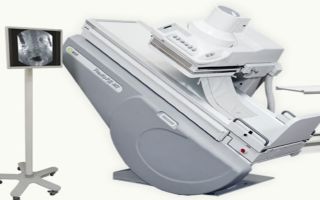Irrigoscopy is an X-ray examination of all parts of the colon (rectum, sigmoid, transverse colon and cecum) with retrograde filling of it with a radiopaque suspension.
Content
When is irrigoscopy used?
Irrigoscopy is an informative research method that allows you to see:
- intestinal location,
- the length of the large intestine and its different parts,
- elasticity and extensibility of its walls,
- identify pathological changes and functionality,
- visualize areas “blind” for colonoscopy (behind the folds of the mucous membrane, in bends, etc.).
This study can identify intestinal diseases such as:
- developmental defects,
- tumors
- polyps,
- diverticulosis,
- fistulas,
- ulcerative colitis,
- cicatricial narrowings, etc.
Irrigoscopy is contraindicated
- in case of serious condition of the patient,
- with perforation of the colon wall,
- during pregnancy,
- with heart failure or tachycardia.
For what symptoms is it recommended?
If one of the following factors exists, it is recommended to undergo examination:
- the appearance of blood in the stool,
- copious mucous, purulent discharge from the intestines,
- pain in the anus or along the colon,
- chronic constipation or diarrhea ,
- suspected bowel cancer.
How to prepare for the procedure?
2-3 days before the study, the patient is prescribed a slag-free diet:
- The patient's diet excludes foods that cause gas formation and heavy stool (greens and fresh vegetables (beets, carrots, cabbage), legumes, fruits (apricots, peaches, bananas, apples, oranges), some cereals (barley, millet, oatmeal), bread from rye flour);
- it is advisable to eat boiled or steamed fish, poultry and meat dishes and lean meat broths, eggs, cheese, butter, semolina porridge,
- Non-carbonated water can be drunk in unlimited quantities.
The evening before irrigoscopy, 1-2 cleansing enemas are given.
Dinner is not permitted. On the morning of the study, a light breakfast is allowed (for example, liquid semolina porridge), and 1-2 cleansing enemas are given again.
To cleanse the intestines, you can use salt laxatives FORTRANS or FLIT PHOSPHONE-SODA according to the instructions and only after consulting a doctor, as there are contraindications for use.
Colon cleansing with Fortrans
"Fortrans" is a flavored powder for the preparation of a drinking isosmotic solution. For intestinal lavage, depending on its condition, it is necessary to use 2-4 sachets of the drug: for persistent chronic constipation - 4, for moderate - 3, for minor - 2.
Before use, the contents of each package should be dissolved in 1 liter of cool boiled water. The patient should drink each liter of this solution evenly over 1 hour (1 glass every 15 minutes).
The time of taking the drug depends on the time of the study. If it is performed in the morning, then intestinal lavage should be performed the day before, starting at 15:00. If the study is scheduled approximately in the middle of the day, then the preparation is carried out in two stages: the first half of the dose is taken the day before, starting at 15:00, the second half - in the morning on the day of the study, starting at 7:00.
The most appropriate method of bowel cleansing should be recommended by a coloproctologist during consultation.
How is the procedure performed?
- At the beginning of the procedure, the patient lies on an inclined table on his side, legs bent, arms behind his back.
- Under X-ray control, a radiopaque suspension is gradually introduced into the colon through the anus until it is completely filled. An aqueous suspension of barium sulfate is used as a radiopaque agent, which is heated to 33-35⁰C.
- For a more even distribution of contrast in the intestine, the doctor periodically turns the patient on his stomach, then on the right and left side, then on his back. After this, a survey photograph and targeted photographs of all parts of the intestine are taken in different positions of the patient.
- At the next stage, after removing the suspension from the intestine, another overview image is taken, which allows you to examine the condition of the intestinal mucosa.
Double contrast method
If a tumor is suspected, the intestine is examined while simultaneously filling the intestine with a radiopaque suspension and air.
This method allows you to examine the intestinal wall in detail and see minor tumors growing into the intestinal lumen, as well as polyps and ulcers.
Irrigoscopy, depending on the size of the area being examined and other individual characteristics of the patient, takes from 15 to 45 minutes.
Within 1 to 3 days after barium enema, the patient may experience stool retention.
The procedure is painless, may be accompanied by the urge to defecate, and rarely by slight spasms.







